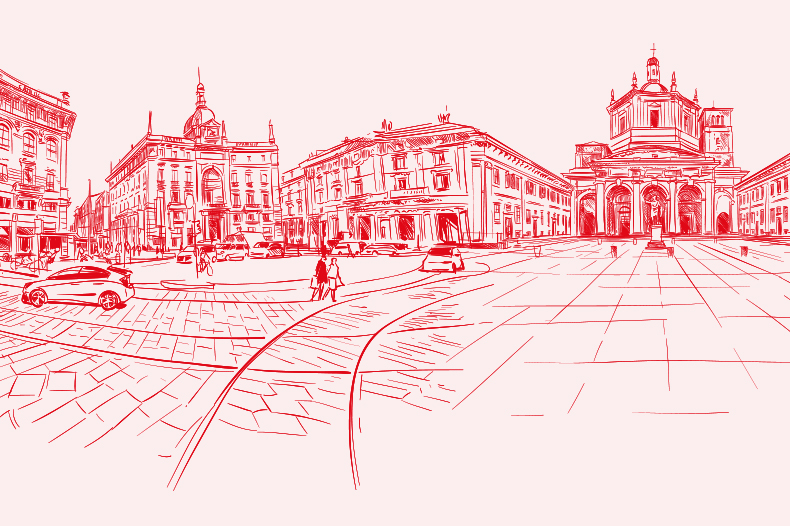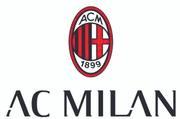Pushing the boundaries
Francesco Simone explores a case that stretches an established principle.

On 31st December 2015, AC Milan (the Applicant) applied for an international registration (No. 1329545) for a trade mark designating the EU. The application covered a broad range of goods and services, including stationery in class 16.
On 6th April 2017, InterES Handels- und Dienstleistungs GmbH & Co. KG (the Opponent) filed an opposition against AC Milan’s application, requesting its partial refusal in relation to stationery products.
The opposition was based on likelihood of confusion with the Opponent’s German trade mark registration No. 1122392, protecting the word mark MILAN.
The Opposition Division (OD) upheld the opposition, and the Applicant filed an appeal against the decision. The appeal was dismissed by the Board of Appeal (BoA) on 14th February 2020.
The Applicant filed a further appeal before the General Court (GC).
Proof of use

The Opponent was called to submit evidence of use of its trade mark, but part of the evidence showed use of the word “Milan” along with the image of a bird’s head (shown left).
The Applicant argued that this part of the evidence should be disregarded as it does not refer to the earlier mark as registered, but to a different mark.

The GC dismissed the Applicant’s argument, citing case law to the effect that the word elements of a complex mark are in principle more distinctive than its figurative elements, because consumers more easily refer to a product by quoting its name than by describing the figurative element of the mark.
For the purposes of proving use, two different versions of a mark are considered equivalent when they differ in elements that do not affect their distinctive character, which is a high threshold of similarity.
It is another established principle that when the common element between two marks has a weak distinctive character, this can be more easily affected by the presence of additional, non-negligible elements.
The GC stated that additional figurative elements in the earlier mark as used on the market can be disregarded for the purpose of proving use, even if they are not negligible, provided they do not alter the distinctive character of the mark as registered.
However, does this principle hold firm even when, as the Court found, the word element has a weak distinctive character?
The case law cited by the Court does not assist, as the word elements of the marks in question had a much higher degree of distinctiveness than “Milan”.
This could potentially be brought to the attention of the Court of Justice in a further appeal by the Applicant, but it may not be sufficient to change the outcome of the proceedings.
Likelihood of confusion
In assessing the likelihood of confusion, the Court first examined the elements of the applied-for mark, to determine their level of distinctiveness and identify any dominant element.
The Court considered that the word “Milan” has three meanings: the city of Milan, the first name Milan or a species of bird of prey. The Court agreed with the BoA that, insofar as “Milan” is perceived as a reference to the city, it has a weak distinctive character.
In its decision, the BoA stated that the figurative element of the applied-for mark “will be perceived by a large majority of the public primarily as a decorative element, and not as an element indicating the commercial origin of the goods”.
Given that the logo in question is an ordinarily distinctive coat of arms, rather than a decorative image, the BoA’s view appears extraordinary, as it would make most logo marks on the market incapable of functioning as badges of origin and therefore undeserving of registration.
This also appears inconsistent with the BoA’s own view that the logo is distinctive in relation to the goods concerned.
The GC, in turn, held that the logo is distinctive, but that it should nevertheless be disregarded when comparing the two trade marks, as the dominant element of the applied-for mark is the word “Milan”.
The Court based this finding on two precedents: Scorify v EUIPO2 and Cotecnica v EUIPO.3 Scorify established that when the word element of a trade mark is substantially longer than the figurative element, it attracts the attention of the average consumer more, while Cotecnica established that an element of a complex mark with weak distinctive character can still be dominant when it is prominent in size and position.
There is, however, still a question remaining as regards whether the Scorify test was correctly applied, considering that the proportions and positions of the elements of the SCORIFY mark are much different than in the applied-for mark, where the logo and the word “Milan” are similar in size and neither is substantially longer, and also considering their different alignment.
Based on that assessment, the Court concluded that the trade marks are similar and therefore ruled in favour of the Opponent.
The Court also confirmed the established principle that the reputation of the applied-for mark is irrelevant in opposition proceedings, as the point in time when the applied-for mark is examined is the filing date of the application, while its reputation would bring into the proceedings facts and events that happened before that date.
In a further curious turn of events, the EUIPO was ordered to pay the travel expenses of AC Milan’s representatives, in relation to a request for a hearing that the EUIPO filed and then withdrew a week before the hearing was due to take place.
Overall, this decision pushes the boundaries of the principle that word elements tend to be more distinctive than figurative elements, giving more value to the word element even when this has a weak distinctive character and is only slightly bigger than its figurative counterpart.
This is a potential basis for a further appeal, but considering the very limited scope of this opposition and the uncertain outcome, AC Milan will need to carefully consider whether the high costs of further proceedings are justified.
Key points
- It is established case law that the word elements of a trade mark tend to be more distinctive than its figurative elements, but this decision pushes the boundaries of that principle
- The word element of a complex trade mark can be the dominant element even if it has a weak distinctive character, provided it is sufficiently prominent
- The reputation of the applied-for mark is irrelevant in opposition proceedings, as it refers to facts and events that happened before the filing date of the application






